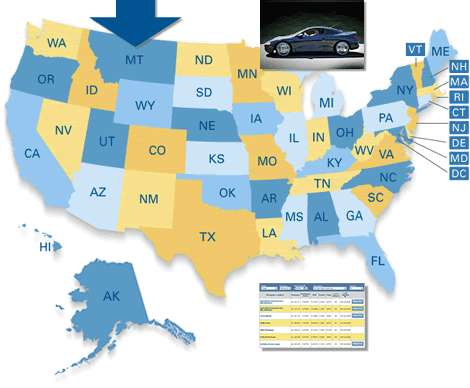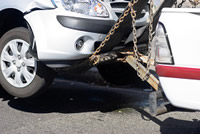What You Need to know Before Buying Auto Insurance
by Amy Lillard
When it comes to auto insurance your driving record along with some personal information, such as your age and credit score, can factor in big. Rates for the same coverage can vary substantially from one insurance carrier to another depending on these personal variables. If you have avoided accidents and eluded moving violations or traffic tickets in the previous two years then you are golden and should seek out competitive insurance bids. Adults with established good driving records will fair better than teens and if you also have a good credit score and allow this information to be taken into consideration your rates could be reduced further. If you have been accident free, you may also want to consider increasing your deductible to help further reduce your premiums. When you obtain an auto insurance policy it is typically applied to the vehicle specifically and the owner who drives it along with anyone having permission to operate the vehicle as well. A policy of auto insurance will cover damage to the vehicle itself in addition to any damages or injuries (including possible death) which may result from operating the vehicle.
Auto insurance is required in most every state now but add in the cost of repairing (or worse yet replacing) a vehicle along with the liability involved and it would be foolish, if not illegal, to drive a vehicle without it. It is strongly advised that you know what is required within your state as well as what extras are worth paying for. The types of coverage pertaining to a standard policy include:
- Collision – includes physical damage to the vehicle due to accidents and collisions with other vehicles or any immoveable objects. This coverage will replace your vehicle in the event of a total loss or irreparable damage to your vehicle. This coverage could be optional but will typically be required if you have any outstanding loans against the vehicle.
- Comprehensive – this covers those persons driving your vehicle with your permission along with theft and natural disasters such as floods and fire. This coverage could be optional but will also typically be required if you have any outstanding loans against the vehicle.
New and Used Auto Loan Rates
Choose Your State Below

Start by selecting your state
- Liability – this covers any damage resulting to the property or person of others. This coverage is divided into two parts both bodily injury and property damage liability. It is the bodily or physical liability coverage which will protect you in the event of a lawsuit.
- Uninsured Motorist - could be additional coverage but is now mandatory in many states as it is estimated that at least 15% of all drivers are uninsured. If you are the victim of a hit and run accident you'll be glad you have this type of coverage. Your medical expenses and any lost wages will also be covered if you are involved in an accident with an uninsured motorist. This coverage is even more critical if you lack separate policies for medical and disability insurance.
- Underinsured Motorist – this covers the gap in insurance payouts if you are involved in an accident with a motorist whose insurance coverage is not sufficient to cover all the expenses related to an accident.
- Supplemental Coverage – if you already have medical and disability coverage separately you may want to pass on some of the costly additional policies including personal injury protection and medical payments coverage in addition to rental car reimbursement and towing coverage. Many of the supplemental policies offered may result in duplicating coverage that you already have.
 A frequent contributor to ERATE® since 2006, Amy Lillard is a freelance writer specializing in turning complex information into useful tips and tricks for readers. For questions or topic suggestions, contact Amy at [email protected].
A frequent contributor to ERATE® since 2006, Amy Lillard is a freelance writer specializing in turning complex information into useful tips and tricks for readers. For questions or topic suggestions, contact Amy at [email protected].
Other Articles:
Auto Loans Advice: New Cars & Used Cars
Car Buying vs Car Leasing
Insurance Products to Avoid
Health Insurance Basics
New and Used Auto Loan Rates
Choose Your State Below

Start by selecting your state

Life Insurance
- Term, Whole, Universal, Varialble Life Insurance
- Guidelines for Purchasing Life Insurance
- Life Insurance: Finding the Best Rates
- Life Insurance Explained: Types and Coverage

Medical Insurance
- Health Insurance Basics
- Healthcare Costs and Retirement
- Critical Flaws in HealthCare
- Disability Insurance
- Tips on Buying Long Term Care Insurance
General Insurance Articles

Homeowners Insurance
- Homeowners Insurance Premiums Policy
- Homeowners Insurance: Filing a Claim
- Punxsutawney Phil's forecast-homeowners insurance rates
- Homeowners Insurance Costly Trends
- Home Insurance Costs on the Rise, Coverage Options Decrease
- Homeowners Insurance: The Special Policy for Condo Owners
- Homeowners Insurance College Students Coverage
- Underinsured Homeowners
- Beyond Homeowners Insurance: Coverage for Renters
- What Home Owners Insurance Do You Need? Tips for the Best
- Home Insurance Quotes: Types of Home Owners Insurance
- Home Insurance: How are Insurance Quotes Determined?
- Homeowners Insurance: Finding the Best Quotes


Auto Insurance

- Hitting the brakes on auto insurance costs
- Car Insurance Quotes: Discovering best deals
- Car Ins Quotes: What Factors Determine Rates
- Auto Insurance Quotes and Policies: Commonly Used Terms
- Shopping Prep: What You'll Need to Obtain Car Insurance Quotes
- Auto Insurance Terms & Descriptions
- Understanding Your Auto Insurance Quotes: The 7 Types of Car Insurance
- Auto Insurance - Best Plan for You
- How much Car Insurance to buy
- Need to Know Auto Ins Policy
- Automobile Insurance Settlement Advice
- Managing Auto Insurance: What to Do After an Accident
- Filing a Car Insurance Claim: Steps to Follow after an Accident
- Auto Insurance Steps to Filing a Claim
- Tips - Reducing your Auto Insurance Expenses
- Driving a Hard Bargain
- Slow Down Drive Safely
- Cheapest & Most Expensive Vehicles to Insure
